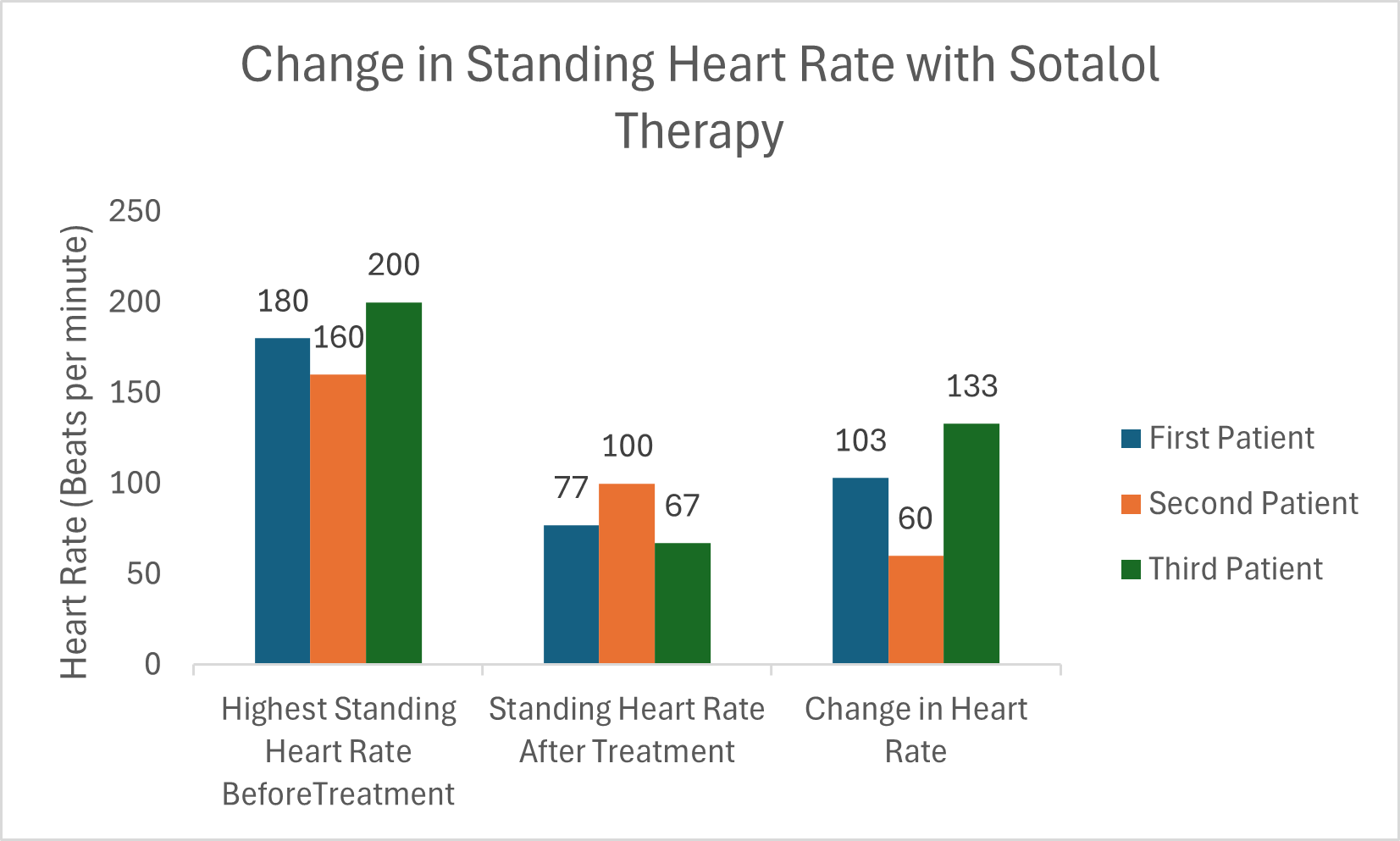Cardiology 3
Session: Cardiology 3
174 - Sotalol: A new alternative in medically-resistant pediatric POTS
Friday, April 25, 2025
5:30pm - 7:45pm HST
Publication Number: 174.6583
Neel Dayal, The University of Toledo College of Medicine and Life Sciences, Perrysburg, OH, United States; William A. Suarez, University of Toledo Medical Center, Waterville, OH, United States; Blair P. Grubb, University of Toledo, Toledo, OH, United States

Neel Dayal
Medical Student
The University of Toledo College of Medicine and Life Sciences
Perrysburg, Ohio, United States
Presenting Author(s)
Background: Postural orthostatic tachycardia syndrome (POTS) is a disorder that causes an increase in heart rate of >40 bpm in children and adolescents when going from a supine or sitting position to a standing position. Treatment-resistant POTS can develop, leaving beta blocker and ivabradine therapies ineffective. Transition of management to sotalol in 3 treatment-resistant POTS patients resulted in heart rate control and symptom improvement with no significant signs of toxicity.
Objective: Describe the development of treatment-resistant pediatric POTS in previously well-controlled patients, and demonstrate the effectiveness of sotalol as an alternative therapy.
Design/Methods: 3 patients were evaluated that had a previous diagnosis of POTS.
Patient 1 is an 18-year-old female with POTS that was treated with atenolol and fludrocortisone until she contracted COVID-19. She had increased dysautonomia-related symptoms post-infection requiring escalation of her medications and addition of midodrine to help with associated hypotension. These changes were ineffective in providing symptom control.
Patient 2 is an 18-year-old female with a history of POTS and Ehlers-Danlos syndrome. Her POTS was controlled with metoprolol, until she developed recurrent episodes of syncope and severe tachycardia. Even after addition of ivabradine and dose escalation of metoprolol, she had increased frequency and worsening of her POTS symptoms.
Patient 3 is a 17-year-old female with POTS treated with metoprolol, midodrine, and ivabradine. After an Epstein-Barr viral infection, her POTS symptoms considerably worsened, and her medications no longer provided benefit.
Results: All 3 patients were started on sotalol twice per day. This treatment provided heart rate control in these patients after they became treatment-resistant to other therapies following a viral infection or some unknown etiology. Sotalol caused an average decrease in heart rate of 98.7 bpm, and a standing heart rate of 100 bpm or less for all 3 patients, with remission of their tachycardia symptoms. None of these patients developed any symptoms of dizziness, lightheadedness, or syncope following initiation of sotalol. ECG evaluation of these patients after starting sotalol treatment showed no proarrhythmias and no QTc prolongation.
Conclusion(s): 3 previously stable pediatric POTS patients were evaluated after becoming resistant to their previous medications. Sotalol was effective in all 3 patients with remission of their tachycardia symptoms without QTc prolongation or proarrhythmia. These findings show the effectiveness of sotalol in medically resistant pediatric POTS.
Figure 1
 Highest standing heart rate before and after sotalol initiation and prior antiarrhythmic medication discontinuation.
Highest standing heart rate before and after sotalol initiation and prior antiarrhythmic medication discontinuation.Figure 1
 Highest standing heart rate before and after sotalol initiation and prior antiarrhythmic medication discontinuation.
Highest standing heart rate before and after sotalol initiation and prior antiarrhythmic medication discontinuation.
